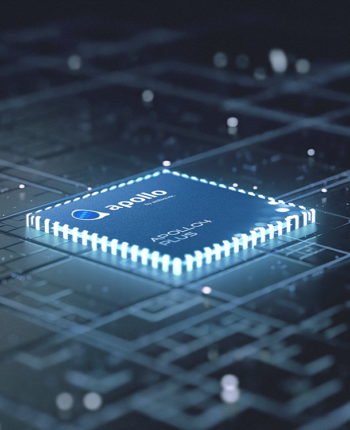Fascination About Ambiq apollo 2
Fascination About Ambiq apollo 2
Blog Article

We’re also constructing tools that can help detect deceptive material such as a detection classifier which can explain to every time a video clip was generated by Sora. We approach to include C2PA metadata in the future if we deploy the model within an OpenAI solution.
The model may also get an current video and extend it or fill in missing frames. Find out more in our technical report.
When using Jlink to debug, prints tend to be emitted to both the SWO interface or perhaps the UART interface, Every of that has power implications. Selecting which interface to use is straighforward:
Most generative models have this basic set up, but vary in the main points. Listed below are 3 well-known examples of generative model methods to give you a way from the variation:
We demonstrate some example 32x32 picture samples in the model in the graphic under, on the correct. Around the remaining are previously samples with the Attract model for comparison (vanilla VAE samples would search even worse plus more blurry).
Ambiq's extremely very low power, large-overall performance platforms are perfect for applying this course of AI features, and we at Ambiq are focused on generating implementation as effortless as you possibly can by offering developer-centric toolkits, program libraries, and reference models to accelerate AI feature development.
Prompt: A lovely silhouette animation displays a wolf howling on the moon, feeling lonely, right up until it finds its pack.
The creature stops to interact playfully with a gaggle of very small, fairy-like beings dancing all-around a mushroom ring. The creature appears to be like up in awe at a significant, glowing tree that seems to be the heart of your forest.
The new Apollo510 MCU is simultaneously quite possibly the most Power-efficient and optimum-functionality item we have ever established."
Our website utilizes cookies Our website use cookies. By continuing navigating, we think your permission to deploy cookies as specific in our Privacy Plan.
Endpoints which might be continuously plugged into an AC outlet can perform lots of kinds of applications and features, as they don't seem to be restricted by the quantity of power they will use. In distinction, endpoint devices deployed out in the field are intended to conduct quite specific and restricted functions.
Consumers only level their trash product at a monitor, and Oscar will inform them if it’s recyclable or compostable.
Prompt: A stylish girl walks down a Tokyo Road filled with heat glowing neon and animated metropolis signage. She wears a black leather jacket, a protracted crimson costume, and black boots, and carries a black purse.
extra Prompt: An enormous, towering cloud in The form of a man looms in excess of the earth. The cloud person shoots lighting bolts all the way down to the earth.
Accelerating the Development of Optimized AI Features with Ambiq’s neuralSPOT
Ambiq’s neuralSPOT® is an open-source AI developer-focused SDK designed for our latest Apollo4 Plus system-on-chip (SoC) family. neuralSPOT provides an on-ramp to the rapid development of AI features for our customers’ AI applications and products. Included with neuralSPOT are Ambiq-optimized libraries, tools, and examples to help jumpstart AI-focused applications.
UNDERSTANDING NEURALSPOT VIA THE BASIC TENSORFLOW EXAMPLE
Often, the best way to ramp up on a new software library is through a comprehensive example – this is why neuralSPOt includes basic_tf_stub, an illustrative example that leverages many of neuralSPOT’s features.
In this article, we walk through the example block-by-block, using it as a guide to building AI features using neuralSPOT.
Ambiq's Vice President of Artificial Intelligence, Carlos Morales, went on CNBC Street Signs Asia to discuss the power consumption of AI and trends in endpoint devices.
Since 2010, Ambiq has been a leader in ultra-low power semiconductors that enable endpoint devices with more data-driven and AI-capable features while dropping the energy requirements up to 10X lower. They do this with the patented Subthreshold Power Optimized Technology (SPOT ®) platform.
Computer inferencing is complex, and for endpoint AI to become practical, these Embedded systems devices have to drop from megawatts of power to microwatts. This is where Ambiq has the power to change industries such as healthcare, agriculture, and Industrial IoT.
Ambiq Designs Low-Power for Next Gen Endpoint Devices
Ambiq’s VP of Architecture and Product Planning, Dan Cermak, joins the ipXchange team at CES to discuss how manufacturers can improve their products with ultra-low power. As technology becomes more sophisticated, energy consumption continues to grow. Here Dan outlines how Ambiq stays ahead of the curve by planning for energy requirements 5 years in advance.
Ambiq’s VP of Architecture and Product Planning at Embedded World 2024
Ambiq specializes in ultra-low-power SoC's designed to make intelligent battery-powered endpoint solutions a reality. These days, just about every endpoint device incorporates AI features, including anomaly detection, speech-driven user interfaces, audio event detection and classification, and health Wearable technology monitoring.
Ambiq's ultra low power, high-performance platforms are ideal for implementing this class of AI features, and we at Ambiq are dedicated to making implementation as easy as possible by offering open-source developer-centric toolkits, software libraries, and reference models to accelerate AI feature development.
NEURALSPOT - BECAUSE AI IS HARD ENOUGH
neuralSPOT is an AI developer-focused SDK in the true sense of the word: it includes everything you need to get your AI model onto Ambiq’s platform. You’ll find libraries for talking to sensors, managing SoC peripherals, and controlling power and memory configurations, along with tools for easily debugging your model from your laptop or PC, and examples that tie it all together.
Facebook | Linkedin | Twitter | YouTube